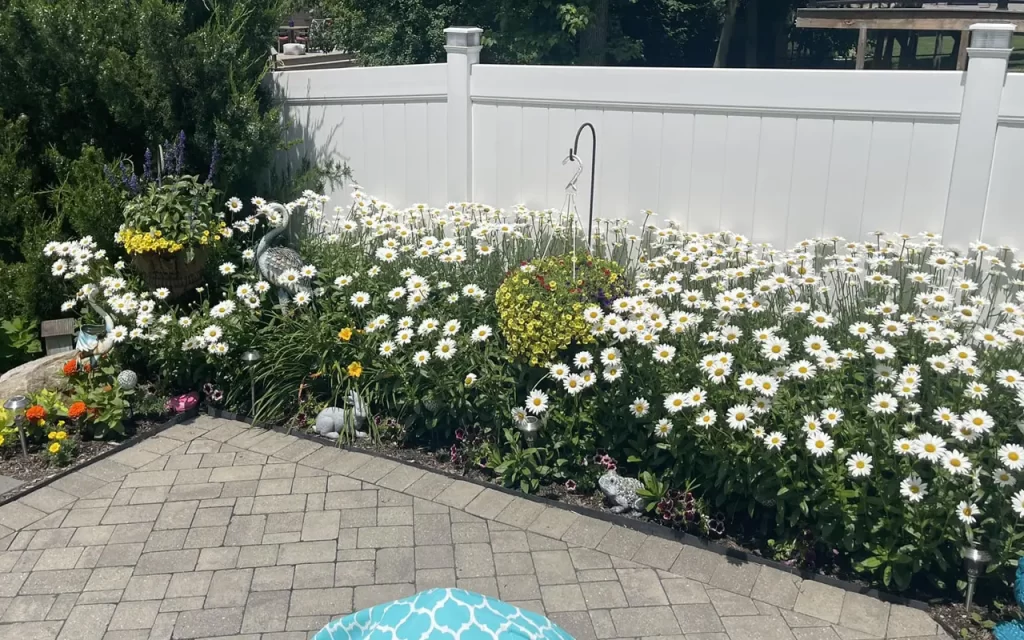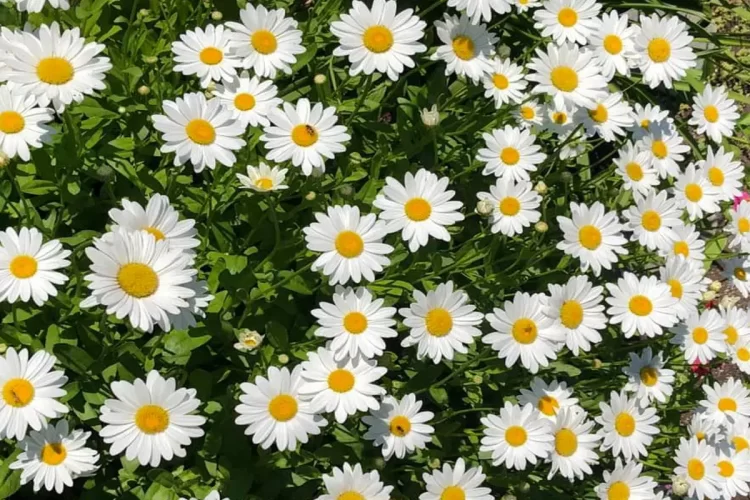The Shasta Daisy (Leucanthemum x superbum) is a charming and hardy perennial that brings a classic beauty to any garden. Known for its iconic white petals and bright yellow centers, this flower resembles the traditional daisy but is larger, sturdier, and incredibly resilient. Shasta daisies bloom throughout the summer, offering weeks of delightful, low-maintenance color and attracting pollinators to the garden. In this comprehensive guide, we cover everything you need to know to cultivate thriving Shasta daisies, from planting to pest management.
Understanding Shasta Daisies
What Are Shasta Daisies?
The Shasta daisy is a hybrid flower developed by horticulturist Luther Burbank in the late 1800s, combining several daisy species for a hardy, large-flowered variety. Named after Mount Shasta in California, these daisies bring a cheerful brightness to gardens and can reach a height of 2 to 3 feet with a similar spread.
Benefits of Growing Shasta Daisies
- Long Bloom Season: Shasta daisies bloom from early summer until early fall, providing extended color in the garden.
- Pollinator-Friendly: These flowers attract beneficial insects like bees and butterflies, which support biodiversity.
- Versatile and Easy to Care For: Shasta daisies are suited to various garden designs, from cottage gardens to formal borders, and require minimal upkeep once established.
Choosing the Right Location for Shasta Daisies

Sunlight Requirements
Shasta daisies prefer full sun, needing at least 6 hours of direct sunlight per day. Planting them in full sunlight encourages healthy growth and abundant flowering. In areas with hot summers, they can tolerate light shade during the hottest part of the day.
Soil Needs
Shasta daisies thrive in well-draining soil. They prefer a pH between 6.0 and 8.0, and a soil rich in organic matter will support robust growth. If you have heavy clay soil, consider amending it with compost or sand to improve drainage, as these flowers are sensitive to soggy conditions, which can lead to root rot.
Planting Shasta Daisies
1. When to Plant
The best time to plant Shasta daisies is in early spring or early fall. Planting in these seasons allows the roots to establish before extreme temperatures set in, giving the plants a strong start for the next bloom season.
2. Planting from Seed or Transplanting
- Starting from Seed: Shasta daisies can be grown from seed, although they may not bloom until the second year. Sow seeds indoors about 8-10 weeks before the last frost date, or directly in the garden once the soil has warmed.
- Transplanting: If you’re planting nursery-bought Shasta daisies, dig a hole that’s slightly larger than the root ball, set the plant in, and backfill with soil. Water thoroughly to help settle the roots.
3. Spacing
To allow for proper airflow and to prevent disease, space Shasta daisies about 12-18 inches apart. This gives each plant enough room to grow without overcrowding, reducing the likelihood of fungal issues.
Watering and Fertilizing Shasta Daisies
Watering Requirements
Shasta daisies are moderately drought-tolerant once established, but they will perform best with consistent moisture. Water plants at the base to avoid wetting the foliage, as wet leaves can promote fungal diseases. During dry spells, water deeply once a week, especially during the blooming period.
Fertilization
These daisies benefit from an application of a balanced, slow-release fertilizer in early spring. Avoid over-fertilizing, as it can cause lush foliage with fewer flowers. Supplement with compost or organic matter around the base of the plants in early summer to encourage blooming.
Pruning and Deadheading for Maximum Blooms

Deadheading spent blooms encourages Shasta daisies to produce more flowers, extending the blooming period. Regularly removing faded flowers directs the plant’s energy into forming new buds rather than seed production.
In late fall, cut back the plants to about 2-3 inches above the ground. This will tidy the garden and prepare the plants for winter dormancy. If you prefer a natural winter look, leave the stems and remove them in early spring before new growth appears.
Propagating Shasta Daisies
Division
One of the easiest ways to propagate Shasta daisies is by division, which also helps prevent overcrowding and rejuvenates older plants. Every 3-4 years, dig up and divide the clumps in early spring or early fall:
- Dig Up the Plant: Carefully lift the entire clump from the ground using a spade.
- Separate Sections: Divide the clump into smaller sections, each with a healthy root system and shoots.
- Replant: Plant each section in prepared soil, water thoroughly, and watch your garden fill with fresh new growth.
Managing Common Pests and Diseases
Pests
Shasta daisies are generally resistant to pests, but aphids and slugs can occasionally cause problems:
- Aphids: are tiny insects that feed on the sap of new growth They can be managed by spraying the plant with a strong jet of water or introducing natural predators like ladybugs.
- Slugs and Snails: These pests feed on foliage and can damage young plants. Use natural deterrents, such as crushed eggshells or diatomaceous earth, around the base of plants to deter them.
Diseases
Shasta daisies are susceptible to a few fungal diseases, especially in humid climates:
- Powdery mildew: is a fungal disease that manifests as a white powder on the leaves. Enhance air circulation by spacing plants appropriately and avoiding overhead watering.
- Leaf Spot: Brown or black spots on leaves are a sign of leaf spot disease. Remove any affected leaves and, if needed, apply a fungicide.
Winter Care for Shasta Daisies
Shasta daisies are hardy perennials and generally tolerate winter well in USDA hardiness zones 5 through 9. In colder climates, add a layer of mulch around the base of the plant after the ground freezes. This will insulate the roots and protect against temperature fluctuations.
Avoid watering the plants in winter unless the soil is exceptionally dry, as excess moisture can lead to root rot. In the spring, remove the mulch layer to allow new growth to emerge.
Landscaping with Shasta Daisies
Shasta daisies are a versatile choice for a variety of garden settings:
- Cottage Gardens: Their traditional look complements other classic flowers like roses, lavender, and foxgloves.
- Wildlife Gardens: Shasta daisies attract pollinators such as bees and butterflies, making them ideal for promoting biodiversity.
- Borders and Mass Plantings: Their tall stems and cheerful flowers are perfect for creating a striking border or backdrop.
Common Varieties of Shasta Daisies
Shasta daisies come in several popular varieties, each with unique features:
- ‘Becky’: Known for its sturdy stems and long bloom season, ‘Becky’ is a garden favorite.
- ‘Snow Lady’: A compact variety that grows to about 10-12 inches, perfect for containers or smaller gardens.
- ‘Alaska’: A classic variety with large white flowers, ‘Alaska’ is cold-hardy and blooms abundantly.
Conclusion: Growing Shasta Daisies for Years of Beauty
With their classic beauty, easy care, and long-lasting blooms, Shasta daisies are a wonderful addition to any garden. By choosing the right location, providing adequate care, and taking preventive measures against pests and diseases, you can enjoy these delightful flowers for years. Whether you’re a seasoned gardener or a beginner, Shasta daisies offer reliable blooms and timeless appeal.


